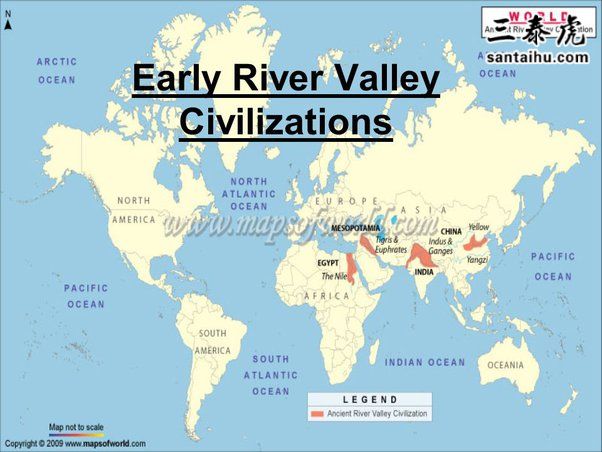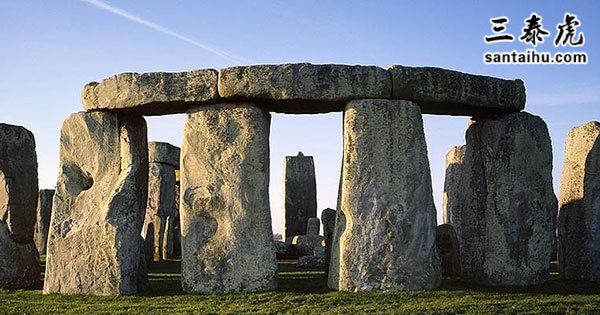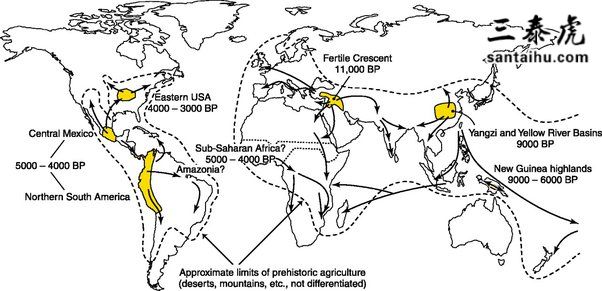East Asia has China, West Asia has Mesopotamia, and South Asia has India as its center of civilization. Why doesn't Southeast Asia have one?
文明中心:东亚有中国,西亚有美索不达米亚,南亚有印度,为什么东南亚没有呢?
以下是Quora网友的评论:
Samuel Chan
Likely for the same reason most places in the world didn’t have a center of civilization, including Europe — surplus agriculture initially developed in only a few specific places in the world, forming history’s first cities before gradually spreading their influence to other places over time. In the Old World, there were FOUR pristine cradles of civilization that arose: Mesopotamia, China, India, and Egypt, all of which formed independently with virtually no external influence (note that Greece isn’t considered a pristine civilization because it grew from Mesopotamian and Egyptian influences).
原因大概都一样,世界上大多数地方也没有出现文明中心,包括欧洲在内——最初,只有几个特定的地区出现了农业耕种,形成了历史上第一批城市,随着时间的推移逐渐传播到其他地区。旧世界出现了四个原始文明摇篮:美索不达米亚、中国、印度和埃及,它们都是独立形成的,几乎没有受到外界的影响。但要注意,人们认为希腊不是原始文明,而是受美索不达米亚和埃及的影响而发展起来的。

So the question is, why did these four places in particular develop civilization first and not elsewhere? Why not Southeast Asia? Or Europe? Or sub-Saharan Africa? The reason is because these four places were the first to experience the Agricultural Revolution thanks to moderate climate, abundant river systems, and good soil quality. Agriculture is the foundation of urbanization, which in turn fosters civilization, which in turn develops more advanced technologies to allow less advanced regions to catch up instead of starting from scratch.
那么问题来了,为什么最先哺育出文明的是这四个地方,而不是其他地方呢?为什么不是东南亚?不是欧洲?或者撒哈拉以南的非洲?因为这四个地方气候温和,河流丰富,土壤质量好,是最先发生农业革命的地方。农业是城市化的基础,城市化促进文明,文明又发展出更先进的技术,让落后地区迎头赶上,不用从零起步。
In other words, the fortuitous climate and geography of these four places allowed them to become cradles of civilization. After these civilizations formed, the rest of the Old World borrowed and built upon their developments to create their own unique civilizations.
换句话说,这四个地方得天独厚的气候和地理条件使它们成为文明的摇篮。在这些文明形成后,旧世界的其他国家借鉴和发展了这些文明,并创造了自己的独特文明。

In fact, the history of Southeast Asia in particular is remarkably similar to the history of Europe, especially from the neolithic era until the end of the premodern period. Just as pre-civilization Europe produced stone megastructures like Stonehenge and Newgrange, pre-civilization Southeast Asia produced giant stoneworks like Gunung Padang, the megaliths of Bada Valley, and the Plain of Jars.
事实上,东南亚的历史和欧洲的历史尤其相似,特别是从新石器时代到近代时期结束这一段。就像前文明时期的欧洲出现了巨石阵和纽格兰奇等巨型石制建筑一样,前文明时期的东南亚也出现了古农巴东、巴达河谷的巨石和石缸平原这样的巨型石制建筑。

Just as the Agricultural Revolution later spread into Europe from the Middle East (Anatolia and the Fertile Crescent), agriculture spread into Southeast Asia from China (the Yangtze and Yellow River basins).[1]
These agricultural influences built the foundation of urbanization in Europe and Southeast Asia.
正如农业革命后来从中东(安纳托利亚和新月沃土)传播到欧洲一样,农业也从中国长江和黄河流域传播到了东南亚。
农业的普及为欧洲和东南亚的城市化奠定了基础。
Just as the first European civilizations emerged from the influences of pristine cradles in Mesopotamia and Egypt (writing, architecture, art, mathematics), the first Southeast Asian civilizations emerged from the influences of pristine cradles in China and India (rice and metalworking from China, Hindu and Buddhist statecraft from India).
正如最早的欧洲文明受到美索不达米亚和埃及原始摇篮的影响(文字、建筑、艺术、数学)一样,最早的东南亚文明也受到了中国和印度的影响(中国的稻米和冶金,印度的印度教和佛教国策)。
Just as Europe invented its first writing systems by deriving them from Middle Eastern scripts (Greek alphabet from Phoenician and Cretan Hieroglyphics from Sumerian), Southeast Asia invented its first writing systems by deriving them from Indic and Chinese scripts (Pyu script from Brahmi and Zhuang script from Chinese).
就像欧洲从中东文字(希腊字母来自腓尼基语,克里特象形文字来自苏美尔语)中衍生出第一套书写系统一样,东南亚从印度和中国的文字(骠文来自婆罗米文,壮语来自中文)中提炼出了最初的书写系统。
Just as the founders of European civilization were the ancient Greeks, Mycenaeans, and Minoans, the founders of Southeast Asian civilization were the ancient Burmese (the Pyu city-states), Cambodians (Funan kingdom), and Malays (Langkasuka kingdom).
正如欧洲文明的缔造者是古希腊人、迈锡尼人和米诺斯人一样,东南亚文明的缔造者是古缅甸人(骠国)、柬埔寨人(扶南王国)和马来人(狼牙脩王国)。
Just as the Roman and Byzantine empires expanded across Europe and introduced statecraft and urbanization to tribal European groups (Germans, Celts, Slavs), the empires of Bagan (Myanmar), Srivijaya (Indonesia), and Angkor (Cambodia) expanded across Southeast Asia and introduced statecraft and urbanization to tribal Southeast Asian groups (Siamese, Shans, Laos, and tribal Austronesians and Austroasiatics).
正如罗马帝国和拜占庭帝国在欧洲扩张,并将治国方略和城市化引入欧洲部落群体(德国人、凯尔特人、斯拉夫人)一样,蒲甘(缅甸)、斯里维加耶(印度尼西亚)和吴哥(柬埔寨)帝国也在东南亚扩张,并将治国方略和城市化引入东南亚部落群体(暹罗人、掸邦人、老挝人、南岛人和南亚人)。
Just as Europe adopted Abrahamic religions from the Middle East (Christianity), Southeast Asia adopted Dharmic religions from India (Buddhism and Hinduism).
正如欧洲接受了中东的亚伯拉罕宗教(基督教)一样,东南亚也接受了印度的达摩宗教(佛教和印度教)。
Just as Europe syncretized Abrahamic religions with pagan beliefs, Southeast Asia syncretized Dharmic religions with animist beliefs. This is precisely why the Christian god is depicted as a sky father in European art (an indigenous European concept), while Southeast Asian Buddists and Hindus still revere guardian spirits in nature and the spirits of their own ancestors (indigenous Southeast Asian concepts).
就像欧洲将亚伯拉罕宗教与异教信仰融合在一起一样,东南亚也将佛法宗教与万物有灵论信仰融合在一起。所以基督教的神在欧洲艺术中被描绘成天父(一种欧洲本土的概念),而东南亚的佛教徒和印度教徒仍然崇敬自然界中的守护神和他们祖先的灵魂(东南亚本土的概念)。
Just as Europe innovated upon influences from the Middle East to build great cathedrals (Christianity and the use of true domes and arches), Southeast Asia innovated upon influences from India and China to build great temples, mixng Hindu-Buddhist architecture with local styles, Chinese motifs (such as guardian lions and dragons), and the Chinese tradition of creating galleries at right angles.*
正如欧洲在中东的影响下创新建造了宏大的教堂(基督教以及圆顶和拱门的运用),东南亚在印度和中国的影响下创新建造了宏大的寺庙,将印度教佛教建筑与当地风格、中国纹饰(如守护狮子和龙)和中国传统的直角画廊结合在一起。
Just as Christian figures in European art were often depicted to look more like Europeans than the Semitic people who originally developed Christianity, Hindu-Buddhist figures in Southeast Asia were often depicted to look more like the Southeast Asian locals than the Indians who originally developed Buddhism and Hinduism.
就像欧洲艺术中的基督教人物的相貌经常更像欧洲人,而不是创立基督教的闪米特人一样,东南亚的印度教-佛教人物长得更像东南亚当地人,而不是创立佛教和印度教的印度人。
Just as nearly all domesticated horses in the world trace their lineage back to those that were domesticated by ancient European pastoralists, nearly all domesticated chickens on every continent trace their lineage back to those that were domesticated by Southeast Asian farmers. Poultry has historically been among humanity’s biggest source of animal protein.
就像世界上几乎所有驯养的马都可以追溯到古欧洲牧民驯养的马一样,几乎所有大陆上的家鸡都可以追溯到东南亚农民驯养的鸡。禽类自古都是人类最大的动物蛋白来源之一。
Just as premodern Europeans revolutionized land transportation by introducing their ancient vehicles to the Middle East, India, and Africa (chariots, carts, the wheel itself), premodern Southeast Asians revolutionized water transportation by introducing their seafaring technologies to China, India, Arabia, and Africa (junks, double outriggers, crab claw sails, the lashed lug technique).
就像近代欧洲人通过向中东、印度和非洲推广古代交通工具(马车、手推车、轮子本身)而彻底改变了陆地交通一样,近代东南亚人通过向中国、印度、阿拉伯和非洲推广航海技术(帆船、双支腿、蟹爪帆、绑带船技术)彻底改变了水上交通。
SUMMARY:
综述:
Southeast Asia didn’t have a center of civilization for the same reason most places in the world didn’t have one, namely because agriculture developed in only a handful of places that just happened to have the right conditions to support it (abundant rivers, stable climate, and quality soil). After these cradles of civilizations formed, the rest of the world adopted their influences and proceeded to build their own civilizations. Southeast Asia was one of them and went on to innovate upon these influences in spectacular fashion, erecting its own civilizations that were as unique as any.
东南亚没有形成文明中心的原因和世界上其他地方一样,也就是说,因为农业只在少数几个地方得到了发展,这些地方恰好有合适的条件来支持农业的发展(丰富的河流、稳定的气候和优质的土壤)。在这些文明摇篮形成之后,世界其他地区接受了它们的影响,开始发展自己的文明。东南亚就是其中之一,东南亚在地区文明基础上进行创新,建立了自己独特的文明。
Interestingly, Southeast Asia shared a remarkably similar history to Europe up until the modern period, despite the fact they’re located half a world apart. Note that I’m not the first person to make this observation. There’s a book called “Strange Parallels” by Victor Lieberman that discusses the similarites between state formation in Europe and Southeast Asia. However, I’ve never read the book nor any summary on it. Everything I’ve written is based completely on my own reading of history, but I mention the book to assure I’m not the only person who has noticed similarities between Southeast Asian and European history.
有趣的是,东南亚与欧洲虽然相隔半个地球,但直到现代之前都有着非常相似的历史。我并不是第一个提出这种观点的人。维克多·利伯曼写了一本名为《奇特的平行线》的书,书中就讨论了欧洲和东南亚各国形成的相似之处。不过我从来没有读过这本书,也没有任何该书的摘要。我所写的一切都完全基于我自己对历史的理解,我提到这本书是为了说明我并非唯一一个留意到东南亚和欧洲历史之间相似之处的人。
Rudy Widodo
If you constrict your view to just Maritime Southeast Asia, then there was one very influential kingdom, the Srivijaya. It is a Malay kingdom with its capital located at modern-day Palembang, Indonesia. It’s territorial expansion included most of Western Indonesia, Malay Peninsula and Southern Vietnam. Even after the fall of Srivajaya, the regions surrounding the former capital (e.g. Riau, Jambi, Johor) had been very important throughout the history of the Malay Archipelago. Even the official language of Indonesia (the 4th most populous country in the world) is a Malay dialect. I’m also pretty sure the official language of Malaysia is too.
如果你把视野局限在东南亚海域,那么该地区有一个非常有影响力的王国,室利佛逝帝国。它是一个马来王国,首都位于今天的印度尼西亚巨港。该帝国曾将领土扩张到了印度尼西亚西部、马来半岛和越南南部的大部分地区。该帝国败落之后,首都周围的地区(如廖内、占碑、柔佛)在马来群岛的历史上也具有举足轻重的地位。世界上人口第四多的国家印度尼西亚的官方语言就是马来语中的一种方言。我也很确定马来西亚的官方语言也是如此。
Suttichart Denpreuktham
There was, or were to be precised. On the mainland you got the Khmer Empire which effectively trnasformed into the modern day Cambodian Kingdom. While they had long ceases to exst as a major power, the essense of theor culture and arguably even their dynastic succession is still surviving today. Obviously they aren’t the same line of rulers from the ancient Khmer empire but so did China various dynasties. Their culture and legacy are pretty much survived by every culture in mainland SEA except Vietnam.
历史上确实有过,确切点说,有过几个。大陆上的高棉帝国变成了现在的柬埔寨王国。虽然高棉帝国早已不复存在,但他们的文化精髓,甚至可以说他们的王朝继承延续至今。他们并不是古代高棉帝国统治者的后代,但中国各个朝代也是如此。除了越南,他们的文化几乎被东南亚大陆的所有文化保留了下来。
To the South you got the ancient maritime kingdoms, although their cultural heritage were pretty much replaced and influenced by the Arabic and European, they were a major ancient kingdoms back them and influenced the foundation of both the mainland and maritime SEA nations today.
南边是古老的海洋王国,尽管他们的文化遗产被阿拉伯和欧洲人所取代和影响,但他们曾经作为一个重要的古代王国,影响了今天大陆和海洋国家的基础。
Ben Huang
Because Southeast Asia is just too hot, too humid.
If you check the climate zones of China’s Yellow River, Mesopotamia and Indus River Valley, they are all Subtropics.
Egypt is in this climate zone too.
The most important factor that impacts civilizations is the environment.
因为东南亚太热,太潮湿。
如果你看看中国的黄河、美索不达米亚和印度河流域的气候带就会发现,它们都处在亚热带地区。
埃及也位于这个气候带。
影响文明的最重要因素就是环境。
 马来西亚为什么没能发展成像新加坡
马来西亚为什么没能发展成像新加坡 (VIP)中国一艘2万吨的军舰交付泰国
(VIP)中国一艘2万吨的军舰交付泰国 新加坡总理、马来西亚总理和西班牙
新加坡总理、马来西亚总理和西班牙 与马来西亚的马来人相比,华人有多富
与马来西亚的马来人相比,华人有多富 世界上40%人口生活在中国和印度这
世界上40%人口生活在中国和印度这 中国真的是现存的唯一一个古代文明
中国真的是现存的唯一一个古代文明 中国给马来西亚的报价明明更实惠,马
中国给马来西亚的报价明明更实惠,马 美版知乎:是不是该把亚洲分为西亚、
美版知乎:是不是该把亚洲分为西亚、